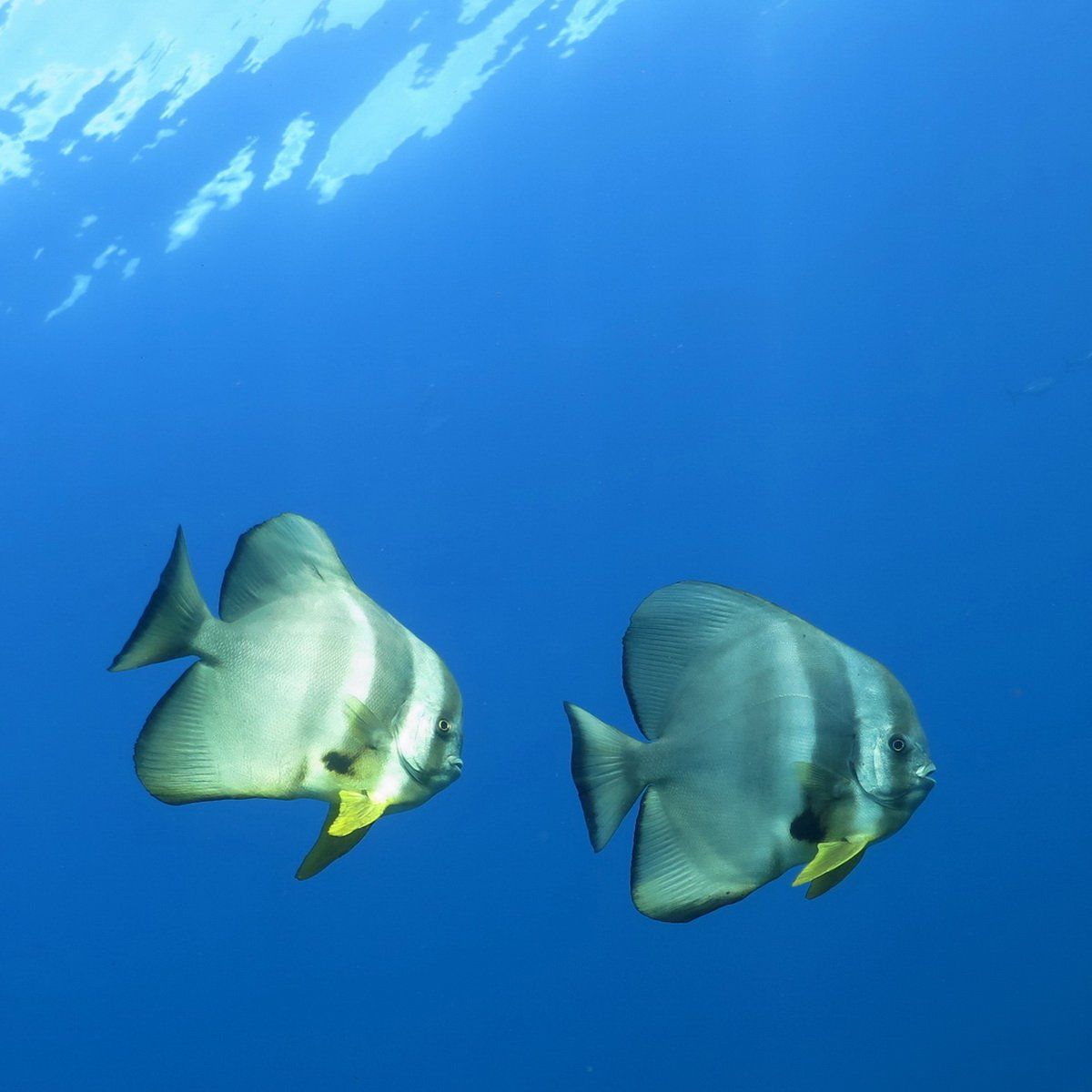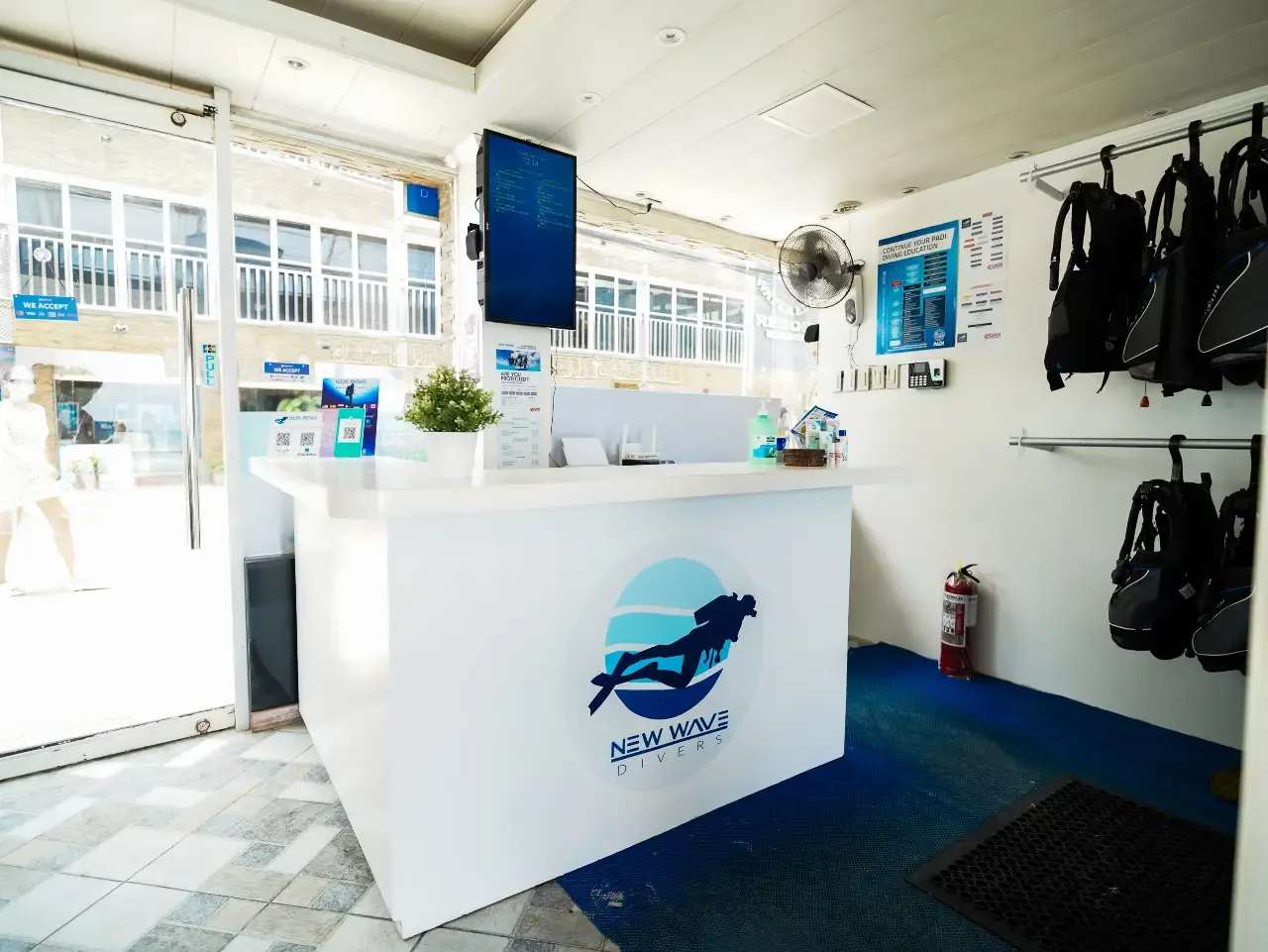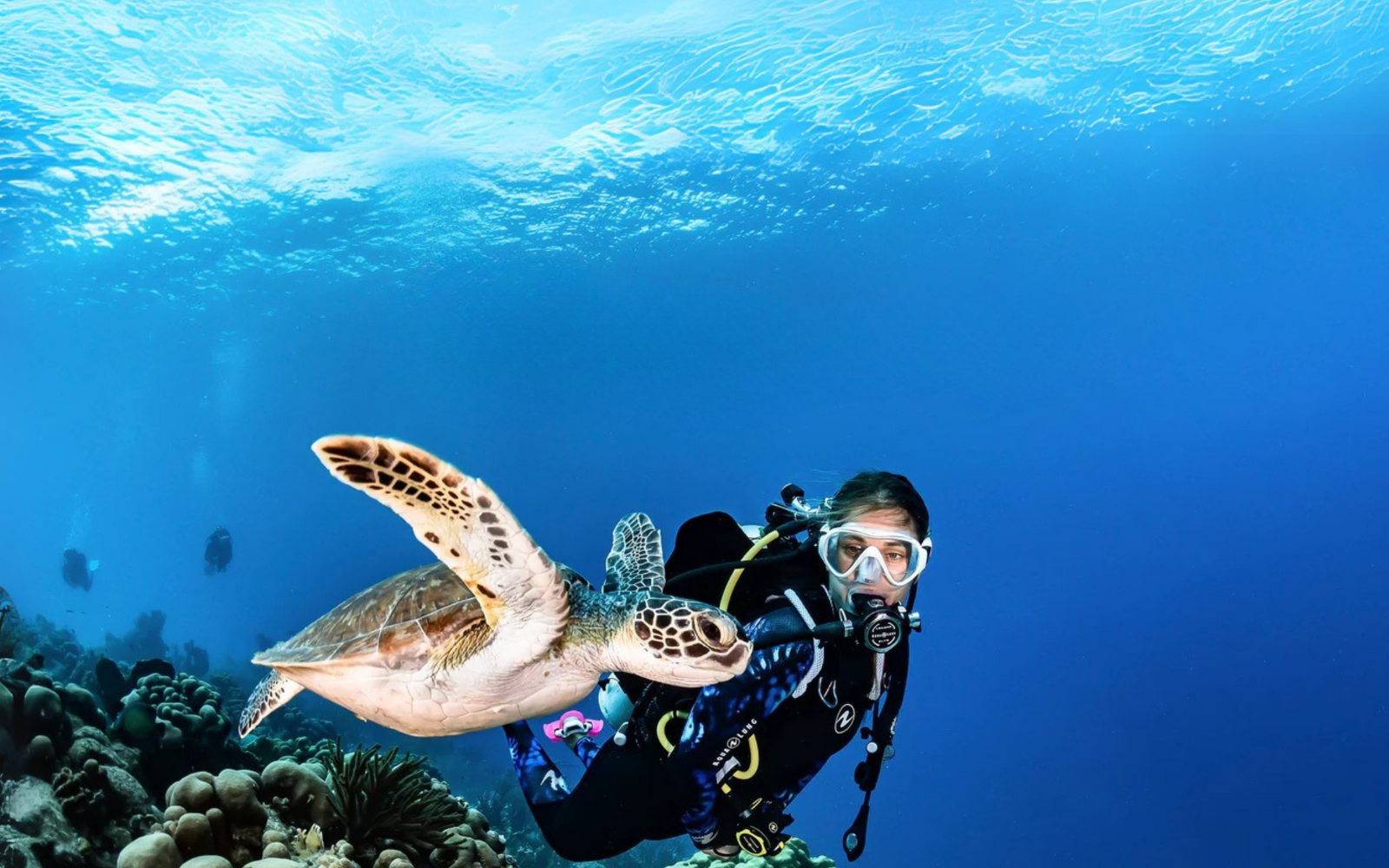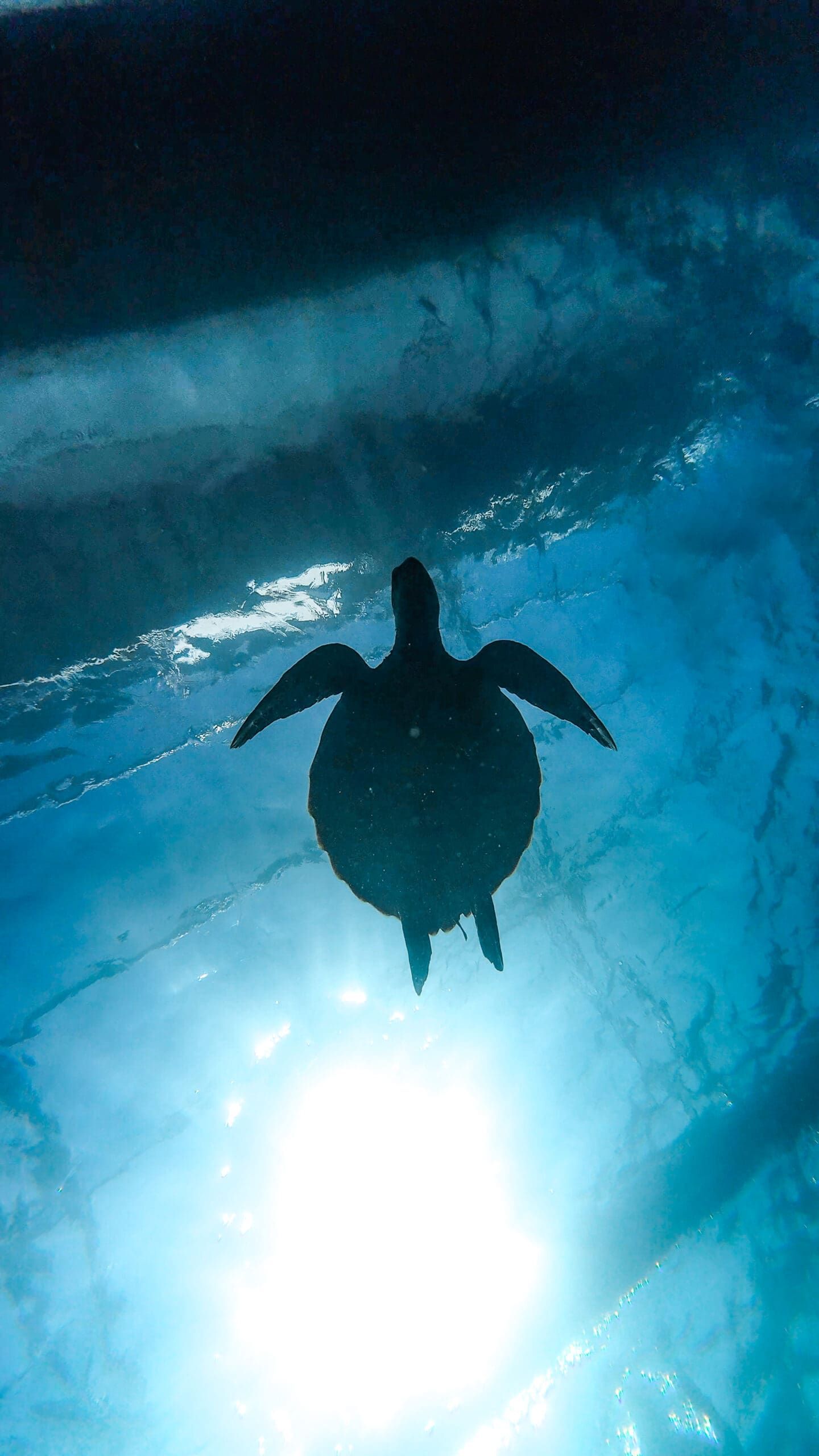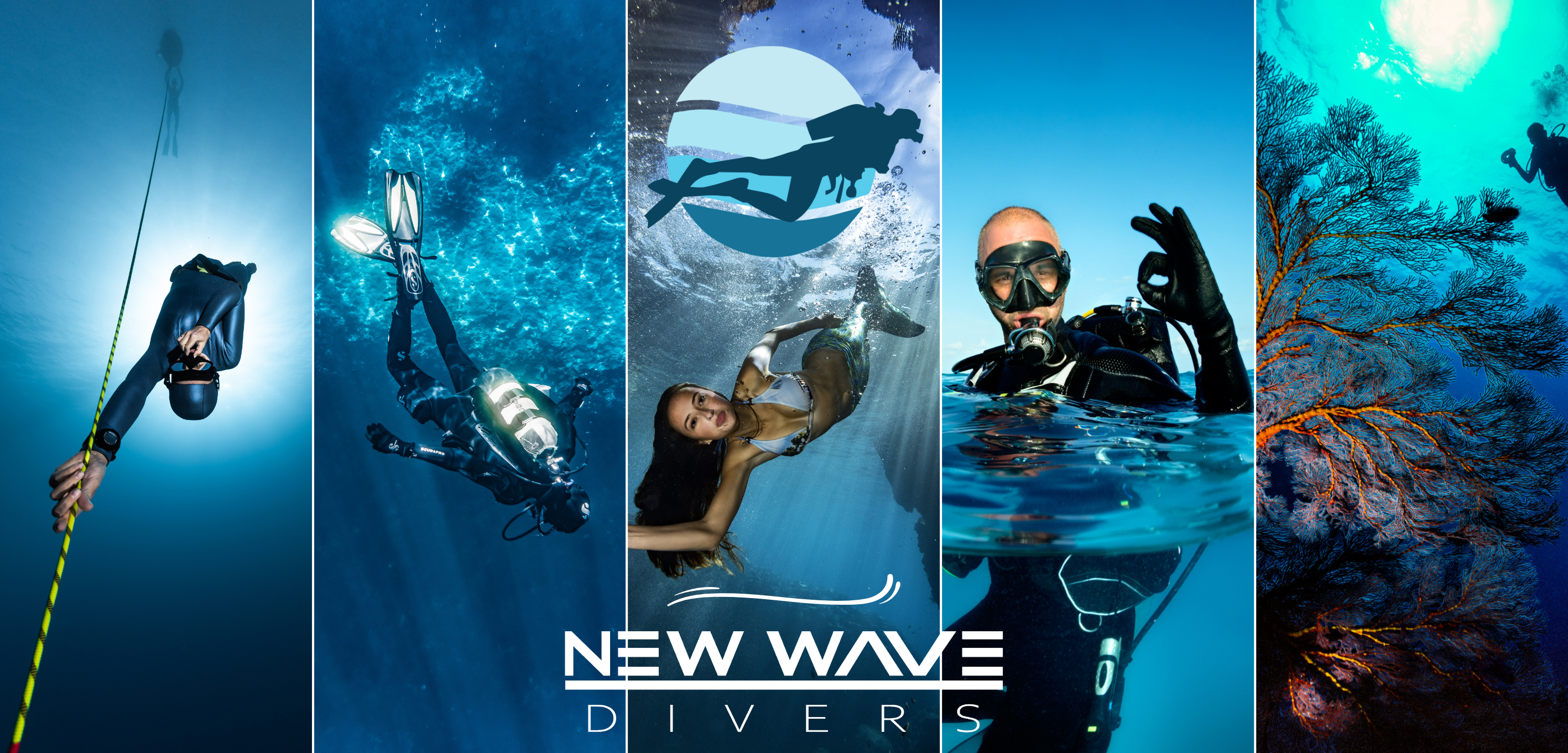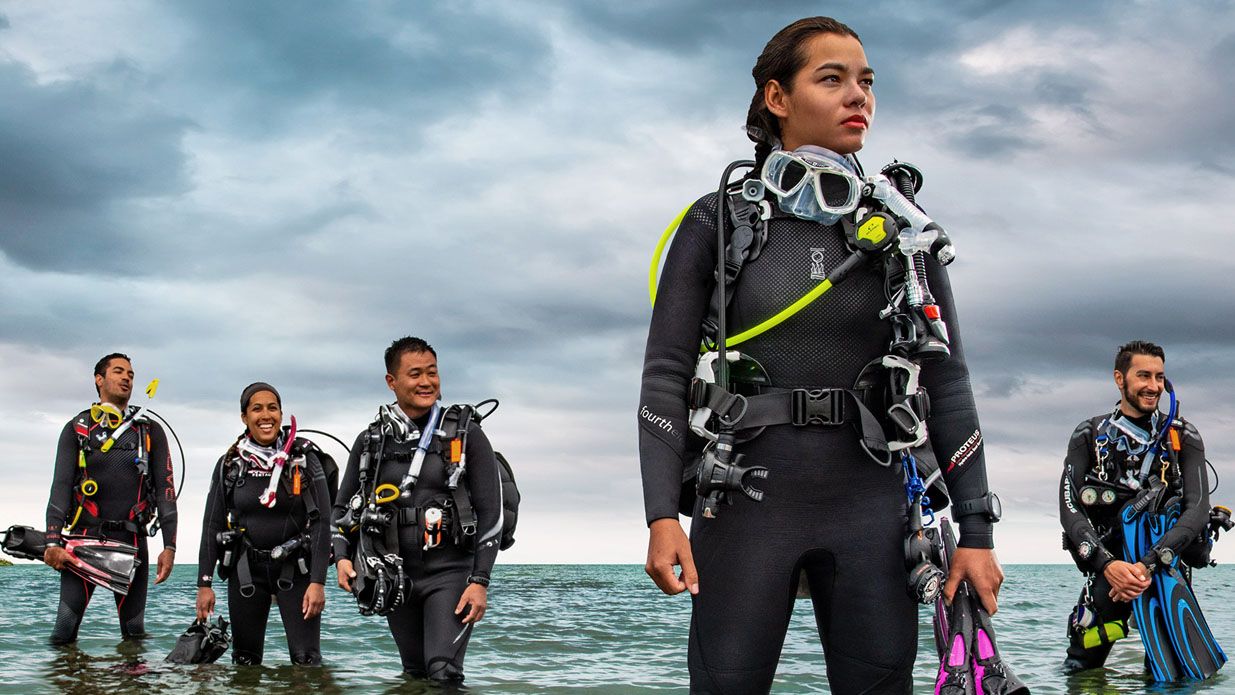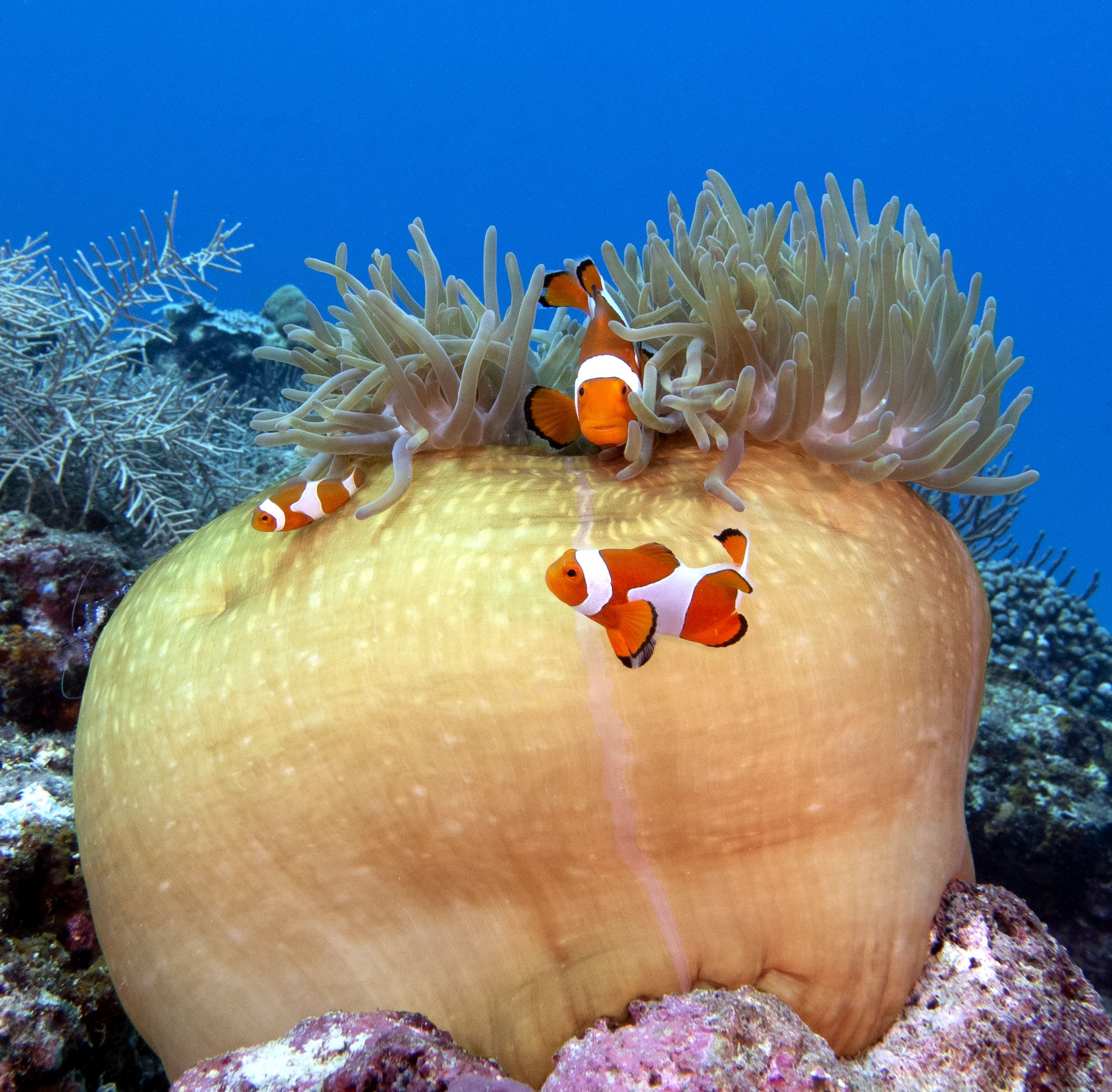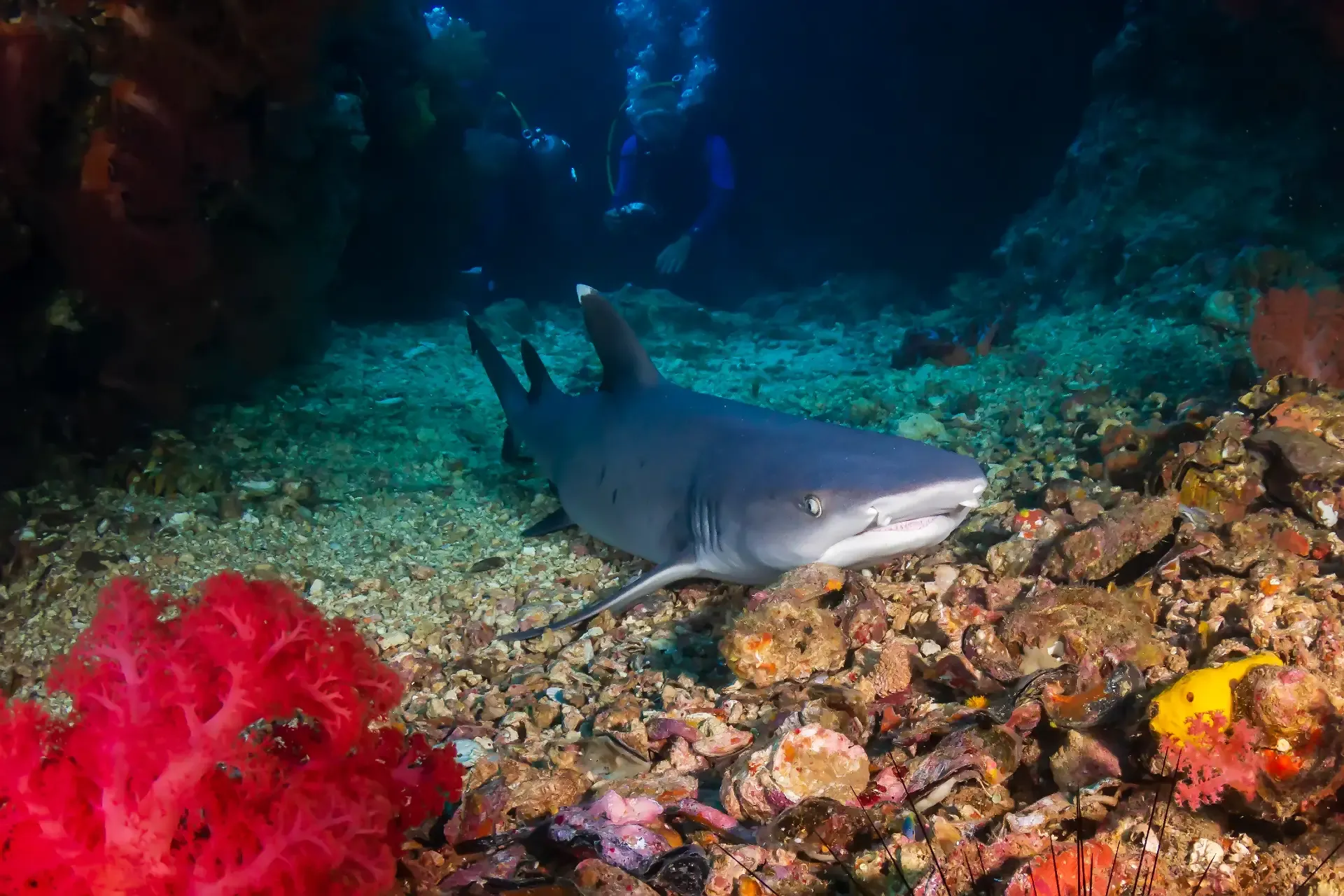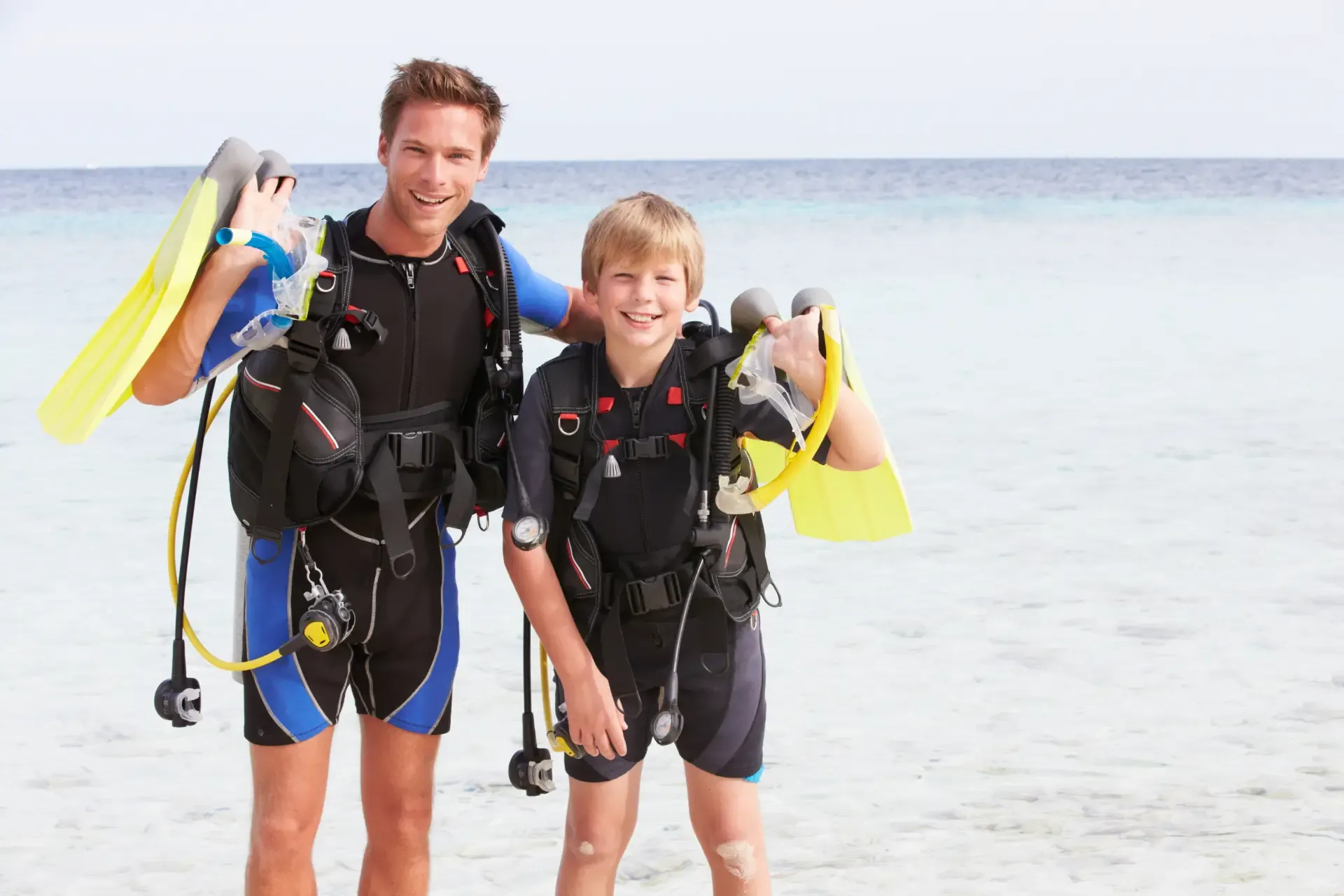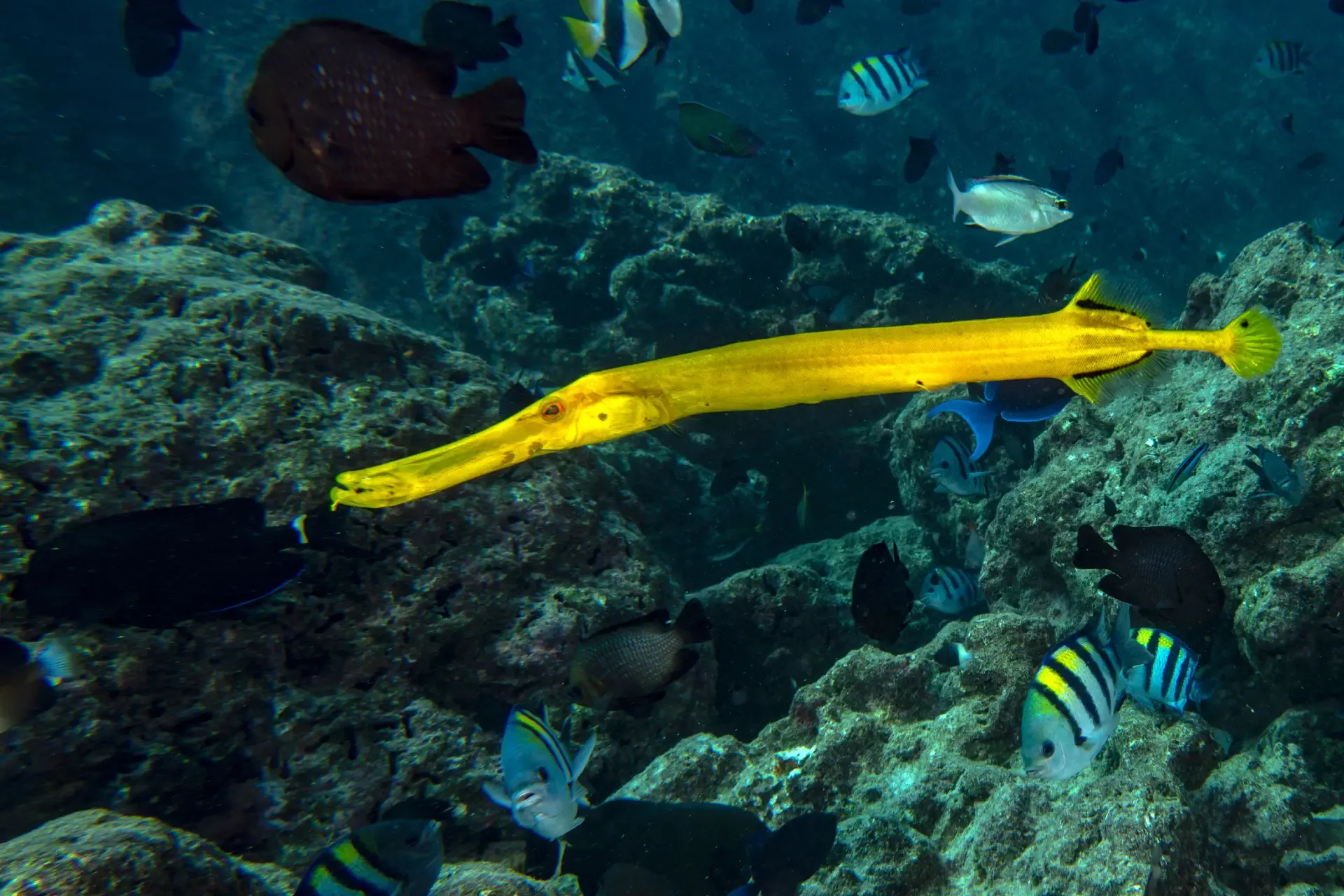Shark Encounters in Boracay: Safe, Natural, and Incredible
For many divers, the chance to see a shark in the wild is a dream come true. In Boracay, that dream is possible—and it’s more accessible and safer than you might think. Shark encounters in these waters are rare but awe-inspiring, always respectful, and entirely natural. At New Wave Divers, we’re passionate about helping divers experience these magnificent creatures while also fostering a deep respect for their role in the ocean ecosystem.
What to Expect from a Shark Encounter in Boracay
Sharks are not the everyday highlight of Boracay dives, but they do make appearances—especially for divers with sharp eyes and a bit of luck. Most commonly, you’ll encounter the elegant and elusive whitetip reef shark, often resting on sandy bottoms or cruising the edges of deeper walls. These sharks are non-aggressive and generally uninterested in divers, making them perfect subjects for respectful observation and underwater photography.
While Boracay isn’t known as a major shark diving destination like Malapascua or Donsol, its charm lies in the spontaneous, natural aspect of these encounters. There’s something especially exciting about spotting a shark on a regular fun dive at your favorite local site.
Shark Species Seen Around Boracay
Here are a few species divers have reported over the years while exploring Boracay’s reefs:
- Whitetip Reef Shark: The most commonly spotted species, usually seen resting during the day or gently gliding through canyons and reef edges.
- Blacktip Reef Shark: Rare, but occasionally seen patrolling near reef slopes or drop-offs, particularly in more remote or current-prone areas.
- Bamboo Sharks: Smaller and nocturnal, these are more likely to be seen during night dives or hidden beneath reef ledges.
All of these sharks are harmless to humans and present an incredible opportunity to observe apex predators behaving naturally in their own habitat.
Best Dive Sites for Shark Sightings
If you’re hoping to increase your chances of seeing a shark, there are certain dive sites around Boracay that are more likely to deliver. Some of these include:
- Yapak: This deep wall dive is famous for its pelagic visitors. Strong currents, excellent visibility, and drop-offs create the ideal environment for whitetip reef sharks and large trevallies. It’s our top recommendation for divers specifically hoping to spot sharks.
- Punta Bunga: Known for its wide array of marine life, this deeper site occasionally surprises divers with passing reef sharks or large rays.
- Maniguin Island: On longer dive safaris, our team has reported sightings of resident reef sharks in caves and along the wall here. This is a rare treat due to the travel time but offers world-class diving.
Sharks and Boracay’s Marine Ecosystem
Seeing a shark on your dive isn’t just thrilling—it’s also a great sign of a healthy reef. As top predators, sharks play an essential role in maintaining marine biodiversity, keeping fish populations in check and removing the sick or weak. At New Wave Divers, we believe in educating our guests about marine life behavior so you can better understand and appreciate the creatures you encounter.
Are Shark Encounters Safe?
Absolutely. All sharks observed around Boracay are non-aggressive and pose no threat to humans. Encounters are passive and non-intrusive. We brief every diver on how to behave around sharks—stay calm, maintain a respectful distance, and avoid chasing or blocking the animal’s path.
These are peaceful, incredible moments that leave a lasting impression—especially when experienced in their natural setting without baiting or artificial attraction methods.
Why Dive with New Wave Divers
At New Wave Divers Boracay, our guides are highly experienced and know exactly where to go for your best chance at spotting a reef shark. We conduct all of our dives responsibly and with conservation in mind. We never bait or chum. Instead, we focus on naturally occurring encounters, guided by local knowledge and patience.
Whether you’re joining us for a fun dive or adding to your dive log with a certification course, our team is there to support, educate, and inspire confidence throughout your dive experience.
How to Prepare for a Shark Dive
Diving with sharks doesn’t require special training, but it does benefit from good buoyancy control, awareness, and a calm mindset. At New Wave Divers, we help prepare every diver with site briefings, behavior guidance, and equipment checks tailored to the day’s conditions. For deeper dives like Yapak, we recommend divers be Advanced Open Water certified, but even Open Water divers can enjoy sightings in shallower areas like Punta Bunga.
If you’re uncertain about your skills or want to refresh before attempting deeper dives, we also offer review sessions and buoyancy workshops to build your confidence underwater. Being relaxed and in control enhances your chances of spotting sharks—and enjoying the moment fully.
Respect and Conservation
New Wave Divers is committed to marine conservation. We believe that shark encounters should be both thrilling and responsible. We actively support education around shark conservation, highlighting the threats sharks face—such as overfishing, habitat destruction, and the shark fin trade. By seeing sharks in the wild, divers often become advocates for their protection, helping shift the narrative from fear to fascination.
All our dives are conducted with zero impact policies, and we brief every diver on how to interact responsibly with marine life. We encourage underwater photography but always emphasize keeping a respectful distance and never touching or feeding wildlife.
What to Do When You See a Shark
If you’re lucky enough to spot a shark on your dive, the best response is to slow down, observe, and enjoy. Keep your movements controlled, stay close to the reef or your guide, and avoid direct pursuit. Most reef sharks will pass by calmly or continue resting if undisturbed. Watching a shark move effortlessly through the water is a moment of pure awe—don’t rush it!
Our dive guides at New Wave Divers are trained to spot and identify sharks from a safe distance, giving you the best opportunity to see them while staying relaxed and informed. We’ll often signal you in advance if one is nearby, so you can ready your camera or simply take in the experience.
Book Your Next Adventure
There’s nothing quite like the rush of seeing a shark in the wild. For many divers, it’s a bucket-list moment—and in Boracay, it’s possible on any given dive. With the right dive plan, a knowledgeable team, and a touch of ocean luck, you might just find yourself face-to-face with one of the ocean’s most majestic creatures.
Contact us today to plan your next dive adventure with New Wave Divers. Whether you’re hoping to spot a shark or just soak in the beauty of Boracay’s reefs, we’re here to make your underwater experience safe, natural, and unforgettable.


